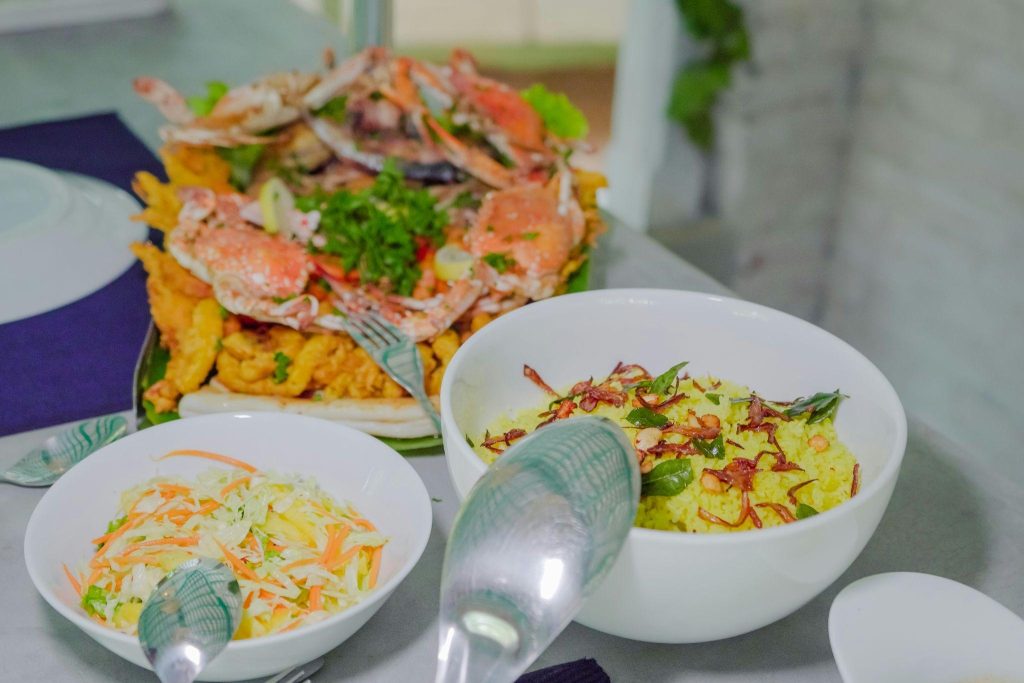10 Must-Try Sri Lankan Dishes for First-Time Visitors

When we talk about Sri Lanka, it is always about beaches, architecture, adventure, tea plantations, natural beauty, temples, history, heritage, and more. What about their flavourful foods? Sri Lanka serves extraordinary, authentic, and slow-cooked foods which are rich in taste and healthy. Sri Lanka is a paradise for food lovers; you can enjoy a variety of flavours on one plate. They serve a wide range of food from famous restaurants to the bustling streets of Sri Lanka, where you can taste the spicy foods with a twist of flavours.
Sri Lankan Food Flavours & History
Sri Lankan cuisine has a unique taste with fresh seafood, along with coconut flavour and seasonal fruits. Sri Lankan cuisine has been influenced by its trading hub in the early period, by South India, the Dutch, the Middle East, Portugal, and the British, and they incorporated it into day-to-day foods. The Island’s abundant spices of cinnamon, cardamom, black pepper and cloves make every food aromatic and classic. The backbone of Sri Lankan cuisine is rice, coconut, fresh seafood, seasonal fruits, and regional spices. To experience the authentic flavour of Sri Lanka, try their top ten best flavour such as Rice and Fish Curry, Hoppers, Kottu Roti, Pol Sambol, String Hoppers, Lamprais, Fish Ambul Thiyal, Parippu, Ceylon Tea, Watlappam, and more.
Top 10 must-try food in Sri Lanka
Each food has a unique flavour and taste, which depends on the process and ingredients. The top 10 must-try foods are listed below, and learn the process of making them.
- Rice and Fish Curry: Rice and fish curry are the best combo for meal options. The white rice and tangy fish curry originate from South India, Tamil Nadu. In Sri Lanka, they have twisted the flavour with coconut milk and fresh local spices.
- Hopper: Hopper, locally pronounced as “appam”, served with fresh coconut milk or non-veg stews. The fermented rice batter makes crispy edges and a soft centre, and the aroma while steaming the hoppers will tempt everyone to taste. Hopper was introduced in the first century from Tamil cuisine in Sri Lanka, and the natives liked the flavour, so they made appam their breakfast and dinner.
- Kottu Roti: Is famous and affordable, with good quantity food, which is prepared by Maida-based roti, vegetables, and curry. It’s full of spicy and mixed curries, the unbelievable taste will satisfy your tummy and heart.
- String Hoppers: It is a delicious breakfast served with sugar & coconut milk or spicy non-veg or veg curry. It’s a perfect match with every side. This string Hopper is a steamed rice flour thin noodle, commonly called Idiyappam.
- Lamprais: Lamprais originated from Dutch Burgher cuisine and is a pack of meals with a variety of side dishes stuffed inside a banana leaf, which gives the food a fantastic aroma and flavour reminiscent of the banana leaf, making it rich and more tasty.
- Fish Ambul Thiyal: This looks similar to fish curry but has a huge difference in taste. The process makes this gravy more delicious, and it is a great combination with steamed hot rice.
- Parippu: Parippu is a vegetarian lentil gravy with tomatoes. Parippu is a comfortable home-cooked food with crispy fried curry leaves and dried red chillies, which gives a punch to the settled flavour.
- Pol Sambol: Pol Sambol is a traditional mixture of coconut, along with local spices of Sri Lanka. This pol sambol was introduced by the Dutch and is basically a spicy chilli-based side for rice, but later Sri Lankans infused coconut and other spices into their taste buds. Pol Sambol is usually served at lunch with white steamed rice.
- Ceylon Tea: Tea plantation was introduced in the 19th century to Sri Lanka by Scottish Planter James Taylor. Sri Lanka is in fourth position for producing tea and in third position for exporting. They produce world-class tea flavour, which makes them world popular. The aroma and the essence of the Ceylon tea capture everyone’s heart.
- Watalappan: Watalappan is basically a dessert composed of jaggery and coconut. This delicious sweet was introduced by Malaysian immigrants in the 18th century. It’s creamy and twisted with a cinnamon spicy flavour, which makes this dessert more tasty.
Conclusion
Sri Lankan cuisine is more than just a food; it’s an experience of exploring unique things with culture, history, and hospitality. It serves a range from traditional foods to fusion foods, as well as delicious desserts and comforting home-style dishes. So, while you are planning your Sri Lanka tour, never miss tasting these delicious foods. This island is filled with love and care, which is evident in their food. Make sure you taste all their authentic and traditional foods, which make your tummy happy and taste buds dance.




